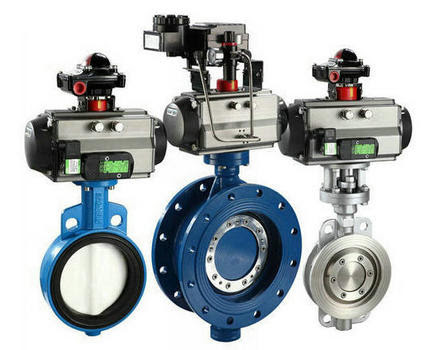+86 15858532562
Views: 42 Author: Site Editor Publish Time: 2024-05-31 Origin: Site








The circular butterfly plate that rotates with the valve stem opens and closes to complete the activation action. The pneumatic valve is mainly used as a cut-off valve. According to the structural characteristics of the pneumatic butterfly valve, it can also be designed to have the function of regulation or segment valve and regulation. Nowadays, butterfly valves are used in low pressure The application on large and medium diameter pipelines continues to increase.
In fact, there are pneumatic butterfly valves on many equipment, especially on pipelines, but we must not underestimate them. However, it is the first time for many people to hear about pneumatic butterfly valves, and they do not understand its advantages and disadvantages. But it doesn’t matter, the editor will introduce to us the advantages and disadvantages of pneumatic butterfly valves.
Pneumatic ball valves are mainly used in pipelines for fast cutting, distribution and changing the flow direction of the medium. Pneumatic ball valve is a practical valve with the following advantages:
1. The fluid resistance is small, and its resistance coefficient is equal to that of a pipe section of the same length.
2. Simple structure, small size and light weight.
3. Tight and reliable, the sealing surface material of the ball valve is widely made of plastic, which has good sealing performance and has also been widely used in vacuum systems.
4. Easy to operate, quick to open and close, just rotate 90° from fully open to fully closed, convenient for long-distance control.

5. It is easy to maintain. The pneumatic ball valve has a simple structure and the sealing rings are generally movable, making it easy to disassemble and replace.
6. When fully open or fully closed, the sealing surfaces of the ball and valve seat are isolated from the medium. When the medium passes, it will not cause erosion of the valve sealing surface.
7. It has a wide range of applications, with diameters ranging from a few millimeters to several meters, and can be applied from high vacuum to high pressure.
8. Because the power source of pneumatic ball valves is gas, which is generally 0, 2-0, 8MPa pressure, it is relatively safe. If the pneumatic ball valve leaks, compared with hydraulic and electric ones, the gas can be discharged directly, without pollution to the environment, and at the same time it has higher safety.
9. Compared with manual and turbine rotating ball valves, pneumatic ball valves can be configured in large diameters (manual and turbine rotating ball valves are generally below DN300 in diameter, while pneumatic ball valves can reach DN1200 in diameter.)